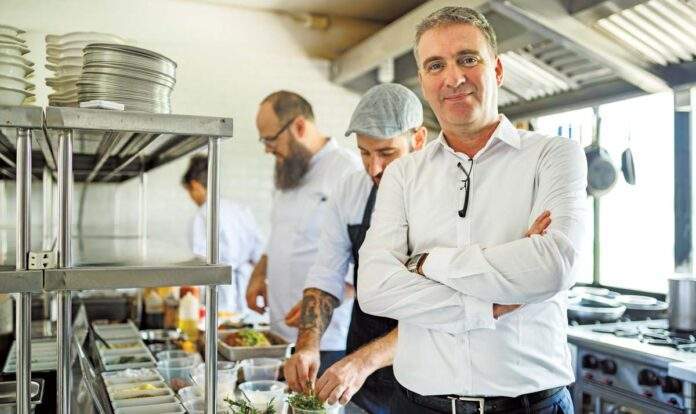
Article contributed by Kari Hensien, President of RizePoint
No one could have predicted the COVID-19 pandemic and the enormous disruption that ensued. The food industry wasn’t prepared for shutdowns, supply chain disruptions, product shortages, and rising prices that resulted from the COVID crisis, and we didn’t have backup plans to deal with the fallout.
Many restaurants didn’t survive the crisis. Those that did had to demonstrate tremendous flexibility, resilience, and creativity to navigate uncharted waters. The key lessons that we learned during the pandemic – pivot to different menu items when certain products are unavailable, reduce waste, lower food and labor costs, etc. – will also be essential as our industry faces a new set of threats.
Today, simultaneous issues are negatively impacting our food supply.
- The US will produce fewer crops due to extreme weather. Extreme drought conditions are wreaking havoc with California’s produce, while the Midwest, which produces three-quarters of our nation’s corn, is facing the opposite problem, with frequent floods washing away precious soil.
- Less grain will be exported from Ukraine due to the ongoing war with Russia. Before the war, Ukraine exported 6 million tons of products, including grain, monthly to the Middle East, Asia, and Africa. Now, they’re only exporting 15-20% of these goods. As a result, an increased 47 million people will likely face acute food insecurity this year.
- One-third of Dutch farms may close. Their government dictated a 30% reduction in livestock numbers in an attempt to meet environmental targets, but this decision will have radical implications for local farms and the food they produce.
- Crates of food are rotting in shipping containers, warehouses, and trucks because of the labor shortage – there simply aren’t enough workers to get the food to their final destinations.
As these concurrent crises come on the heels of the COVID pandemic, restaurants would be wise to:
- Be prepared and resilient. A big takeaway from the COVID crisis is that food businesses must proactively ensure that their suppliers all along the supply chain are prepared and resilient. We saw what happened when the world wasn’t prepared for a global crisis, as we faced simultaneous product shortages, supply chain disruptions, labor shortages, and inflation. Prepare now for future food disruptions by making continuous efforts towards sustainability and resilience, finding alternate food sources, and embracing a circular supply chain.
- Use tech tools to manage your supply chain. Digital solutions allow you to audit and evaluate your supply chain’s sustainability and resilience. These innovative tools help you get a better handle on your supply chain, organizing supplier certifications into a system you can see and manage. Tech tools – which have become extremely affordable, accessible, and user-friendly – provide necessary transparency through every step of your supply chain, which is essential with the various threats impacting our food supply.
- Develop backup plans. If we learned anything over the past two and a half years, it’s the need to be proactive. What’s your backup plan if you can’t get California produce or midwestern corn due to extreme weather conditions? Do you have alternate suppliers in case your usual vendors can’t provide the products you need? And how are you researching and vetting these Plan B suppliers to be certain they meet stringent safety and quality standards?
- Rely on local suppliers. As we’ve seen, the Ukraine/Russian conflict is disrupting the global food supply, as multiple countries are unable to get their usual Ukraine exports. A
major decrease in California crops and midwestern corn would negatively impact many states. If you aren’t already doing so, start relying on local farms – or grow your own produce – to ensure an uninterrupted supply of fresh foods. - Embrace vertical farms. Vertical farming, which grows crops closer to their final destinations, is increasing in popularity. This alternative farming approach grows crops vertically – to maximize output – in climate-controlled indoor spaces, which protects crops from severe weather, pests, etc. Growing foods closer to where they’re needed helps reduce food deserts, lower safety risks, and minimize food wastage.
- Reduce food waste. Food prices are experiencing the largest increase in 40 years. Since there’s no end in sight for this massive inflation, restaurants must use food more mindfully and resourcefully. Tech tools can help minimize food waste and make inventory more efficient. Additionally, digital solutions provide predictive ordering and historical sales patterns so you can make more informed purchasing decisions to order only what you can realistically use.
- Streamline your menu. Last year, 75% of restaurant operators tweaked their menus due to supply chain disruptions. Reduce your menu offerings and simplify recipes. Buy fewer, affordable ingredients that can be used in multiple ways. Offer more plant-based meals to reduce costs. Use yesterday’s leftovers in creative ways for today’s specials. Utilize local, in season produce. Eliminate underperforming dishes and spotlight the meals with the highest profit margins.
- Work to retain staff. Restaurants are still facing the most severe labor shortage on record. People are leaving their restaurant jobs because wages are often low, existing employees are being overworked, and many feel unappreciated. Replacing employees costs significant time and money (the cost of replacing one restaurant employee often surpasses $5,000!) Make sure your employees are happy so they’ll stay. Offer competitive pay and benefits, use digital scheduling tools to ensure you’re properly staffed for busy vs. slower shifts, and make employees feel valued. During these challenging times, you have plenty of other things to worry about without having to focus on recruiting, hiring, and training new employees. Keep your staff happy and loyal.
As a restaurant operator, you have no control over the weather, overseas wars, or ongoing inflation, but there are things within your control, and that’s where you should focus. Prioritize waste reduction. Adjust your menu to feature local, affordable ingredients. Research new suppliers. Stay aware of industry trends and current events. Utilize tech tools to streamline operations and make important tasks more efficient and accurate. If you stay prepared and resilient, you’ll be ready to handle whatever curveball comes next.
 As President of RizePoint, the longest-lasting quality management vendor in the marketplace, Kari Hensien has been instrumental in launching the company’s Ignite™ Supplier Certification Management solution and adding new features to make the platform even more valuable. Ignite allows companies to gather, organize, and manage supplier documentation and information in a centralized location, track status and deadlines, ensure compliance, and reduce time-consuming administrative tasks. Ignite leverages the latest tech stacks in cloud computing to deliver better speed of service, security, and performance, with shortened development cycles. For more information or to discuss RizePoint’s solutions, please contact Kari at kari.hensien@rizepoint.com.
As President of RizePoint, the longest-lasting quality management vendor in the marketplace, Kari Hensien has been instrumental in launching the company’s Ignite™ Supplier Certification Management solution and adding new features to make the platform even more valuable. Ignite allows companies to gather, organize, and manage supplier documentation and information in a centralized location, track status and deadlines, ensure compliance, and reduce time-consuming administrative tasks. Ignite leverages the latest tech stacks in cloud computing to deliver better speed of service, security, and performance, with shortened development cycles. For more information or to discuss RizePoint’s solutions, please contact Kari at kari.hensien@rizepoint.com.























